Chicken Tractor – The Complete Guide + Plans You’ll Actually Want to Use
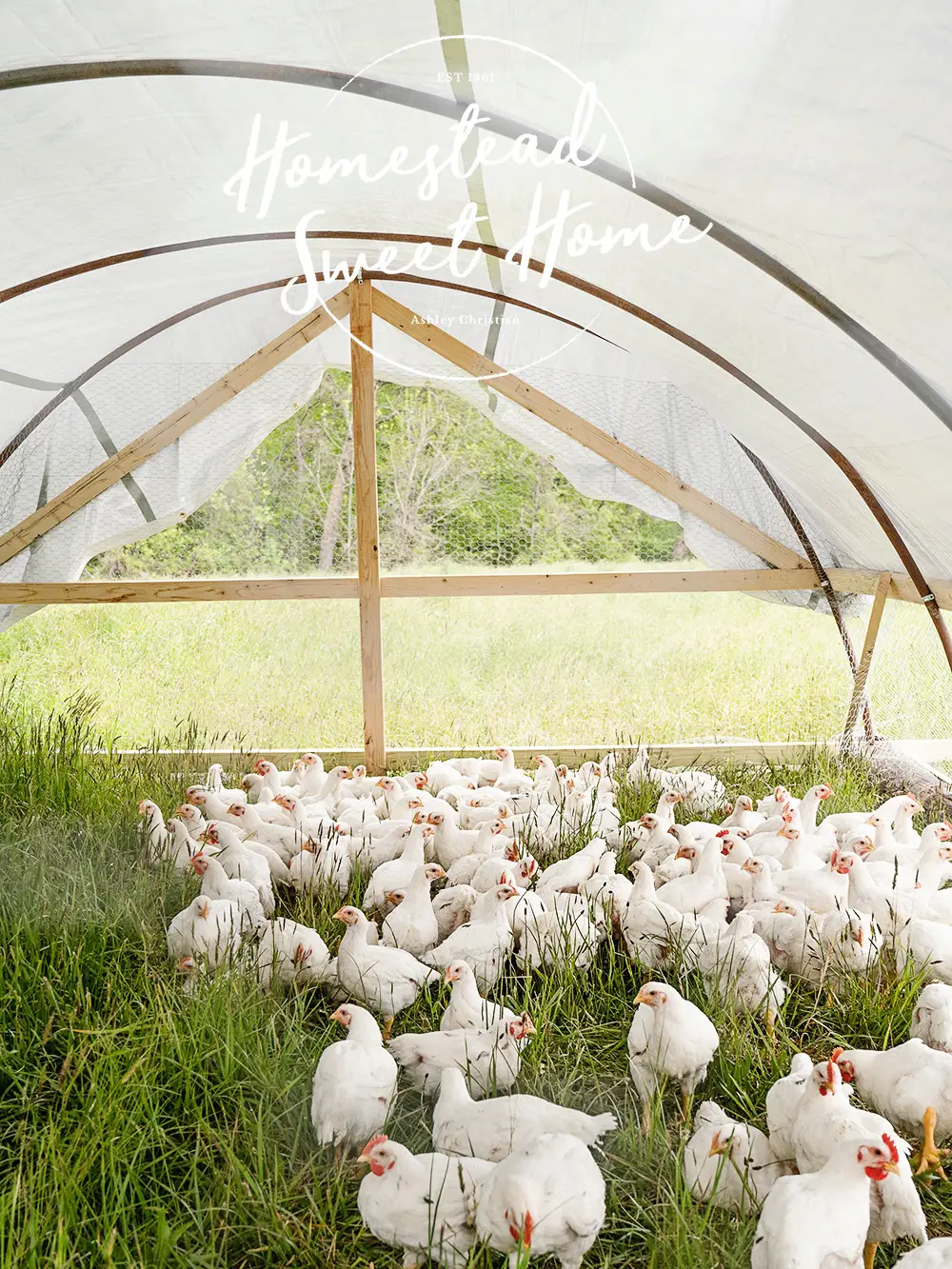
What is the Point of a Chicken Tractor?
The chicken tractor is a simple chicken coop on wheels that can be easily moved, giving chickens constant access to fresh food and fertilizing the ground, while keeping them safe from predators.
The general idea is something small and simple like this from @elderflatfarm
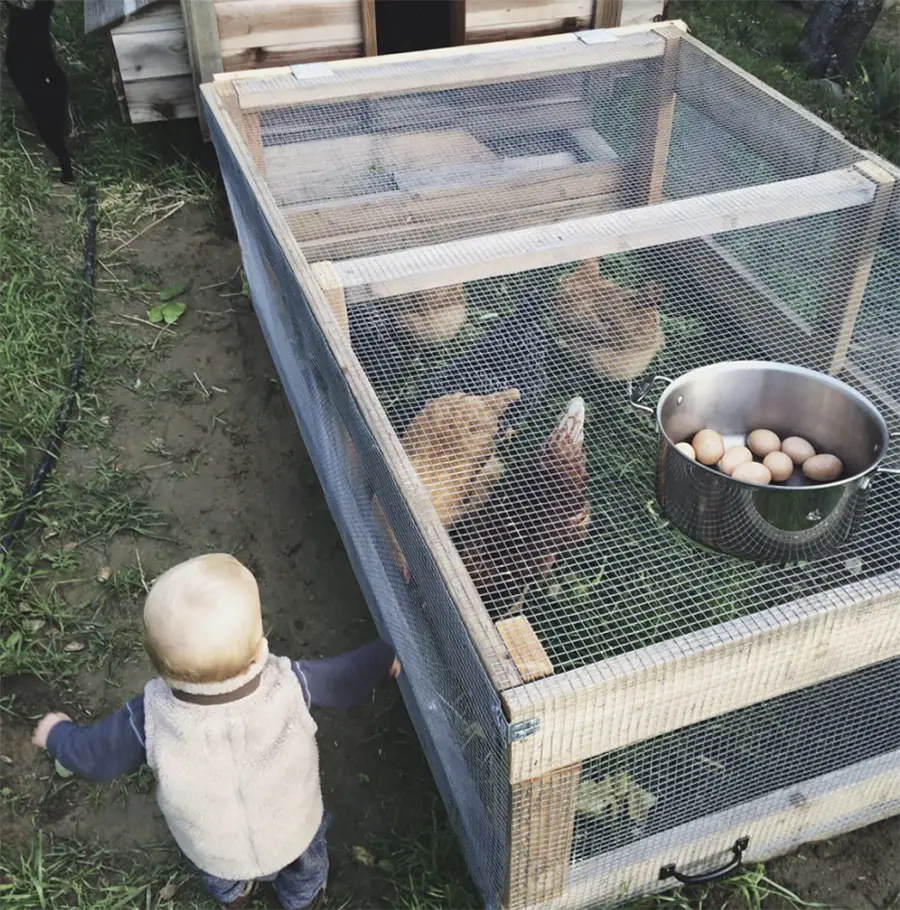
But other people take the chicken coop on wheels to a whole other level
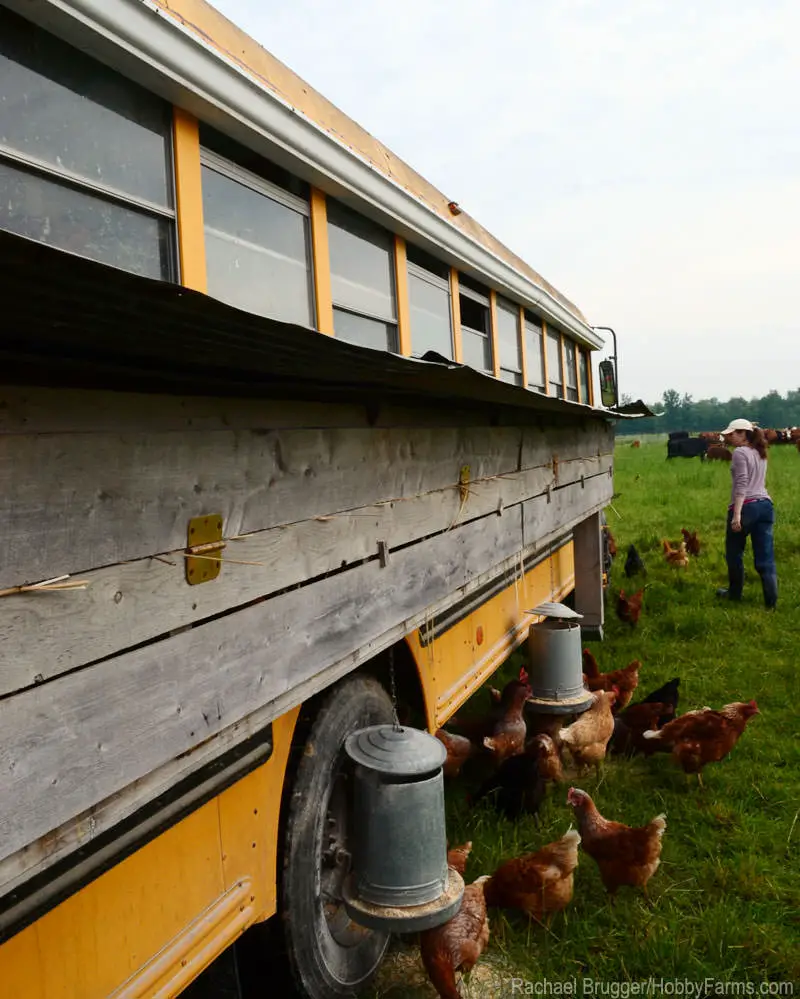
Why Would You Use a Chicken Tractor?
If you’ve ever looked at Chicken Coop Plans, you’ll notice most of them have an attached covered chicken run. That’s because everything loves a chicken dinner. As romantic as watching your free-range chickens forage from your kitchen window sounds, it only takes one coyote pillaging your beloved flock and leaving you with feathers and carcasses to change your mind.
Still, free-range chickens are major goals for both the chicken and the health of their eggs. Free-ranging keeps your flock their most happy and healthy, and leads to eggs that are exponentially richer in vitamins and minerals. If chickens are confined in a space for too long, they can develop nasty behaviors like feather picking and egg eating. Free-ranging is better for everyone.
The hardest part of owning chickens, in my experience, is protecting them from predators. Coop windows and runs must be lined with ¼ inch hardware cloth to protect from hawks, snakes, and weasels, locks must be multi-step to protect from raccoons and runs covered on top to protect from foxes who can climb and even jump 15 feet in the air.
Predator proofing is where all our chicken money goes, and where our children feel the greatest farm loss as the chicks they raised and held end up as torn-up carcasses. Enter the chicken tractor to save the day!
Chicken tractors give us the best of both worlds. They keep our flock safe and still allow them the pleasure of free-ranging. A chicken tractor can be moved anywhere from daily to a few times per month, depending on your land and your time. They are also one of the simplest and most cost-effective chicken coop designs to build yourself.
If you would like to raise chickens specifically for meat, which is a really fun project I highly recommend, a chicken tractor is your best solution to house them for the 6 to 8 weeks they take to raise. Meat chickens are often hybrid breeds from several other breeds and are extremely fast-growing, heavy, and prone to leg problems. Because of this, they can’t fly and won’t need roosts. And as meat birds, won’t need nesting boxes either. A chicken tractor makes a very simple shelter you can move from place to place to allow them to free-range and will suit them perfectly.
Can Chickens Lay Eggs in a Chicken Tractor?
Yes, chickens can lay eggs in a chicken tractor. Some folks opt to use their chicken tractor as more of a movable chicken run during the day and bring their chickens into a stationary coop at night. This option allows them to have a much simpler chicken tractor design that only needs to provide some overhead shelter and food and water.
For some, this option may be too much daily work, so it’s easier to have their chicken tractor be a coop and attached run on wheels. It is more common for chicken tractor plans to be an all-in-one solution like this.
If you have your coop as part of you’re chicken tractor, you’ll need a model with nesting boxes so your chickens can lay eggs in it. Nesting boxes should be about 12×12 inches and allow one nesting box for every three hens. Because chicken tractors are typically small, you likely won’t need more than one or two nesting boxes. Make sure you have an opening lid or some other feature that allows you to easily access the nesting boxes to collect eggs and allow for easy cleaning.
The nesting boxes and main coop area with a roost are typically situated above ground, to leave as much space for “free-ranging” in the run as possible. This setup also supplies shade for your chickens in the summer. You’ll need 4 square feet of space per chicken in the coop, and a minimum of 10 square feet of space per chicken in the run. Each chicken will also need about 8 to 10 inches of space to roost at night.
How Much Space do you Need in a Chicken Tractor?
Often when you find chicken tractor plans, they suggest far too many chickens for the space. Overstuffing a chicken tractor defeats the point of giving chickens the space to free-range. By nature, chicken tractors are small so they can be easily moved, thus they will not be able to fit a ton of chickens. If you’d like to fit more chickens in your chicken tractor, it’s better to build two tractors so you’re not overstuffing or building one so large you can’t move it. Or opt for a lightweight hoop house model.
Most families will do well with somewhere between 3 to 6 chickens to provide eggs and companionship. This is a perfect amount of chickens for a chicken tractor and can fit in nearly any backyard, making this a real option for all families to eat fresh eggs rather than purchase them from the store.
When planning your chicken tractor, follow the guidelines of 4 square feet of coop space and a minimum of 10 square feet of run space for each chicken. Some small farmers have opted to use a hoop house, or greenhouse, in the same way you would use a chicken tractor. This is a great solution because you can easily stand up in them, and you can get a ton more space while still being somewhat portable.
Another idea popularized by Justin Rhodes is using a mobile coop and movable electric net fencing around it in a circle to allow the maximum amount of chickens the most free-range space while still keeping them safe. You can download Justin’s free plans for his mobile chicken coop called the Chickshaw, but keep in mind you’ll need to buy electric fencing as well.
If you are keeping meat chickens in your tractor, they won’t need as much space. Since they are so large, they aren’t very active. 3 square feet per bird in the chicken tractor will do just fine, and you’ll save extra space since you don’t need roosts, nesting boxes, or a separate coop. This is our favorite hoop house plan for raising meat chickens.
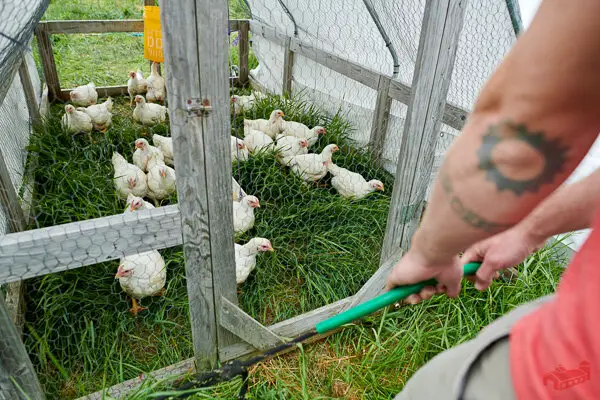
Will a Chicken Tractor Keep My Chickens Safe from Predators?
This is a great question and it really depends on your area and what sort of predators you’re dealing with. Even though most chicken coop plans will call for chicken wire, use ¼ inch hardware cloth instead to keep them safe, and use latches with two steps to outsmart raccoons.
The biggest weak point of the chicken tractor is the grass floor. Digging predators like foxes and coyotes can very quickly dig under and make quick work of your entire flock. If you live in a neighborhood with a fenced-in yard, this may not be an issue for you. If you live in a more open or rural area where predators can easily come and go, you may be in trouble.
Two great options are either using a movable electric net fencing or creating a hardware mesh skirt that extends 12 inches out on all sides of the coop and lays flat across the ground. This may do the trick of keeping predators from digging under your coop and taking your chickens.

Cleaning Your Chicken Tractor
All the moving and bumping from place to place can cause your chicken tractor to wear out more quickly than a stationary coop. But if you use a good outdoor paint to weatherproof, that will help. We had a wooden chicken tractor that lasted close to 8 years before it finally fell apart. That’s a pretty good track record! The wheels were one of the first things to go bad, so don’t skimp on wheels if you are using them in your design.
One of the great benefits of using a chicken tractor is that it will need far less cleaning than a stationary run. I would recommend applying linoleum or vinyl flooring in the coop and nesting box portion of your chicken tractor to make it easy to clean out and help with waterproofing. Having a waterproof floor will also help prevent rotting wood and so it lasts longer.
You can use wood shavings on the floor of your coop and in your nesting boxes to catch any chicken messes and change them out when they become heavily soiled. If your design allows, I would recommend placing your roosting board or branch directly above the open ground. Chickens roost and poop at night, and I’ve found the vast majority of the poop that collects in the coop, is found under the roosts.
Another option, especially if you have the roost over open ground, is to skip the bedding in the floor of the coop, and just shake or sweep any messes out each time you move the chicken tractor. I also recommend you keep your chicken’s food and water outside of the coop area and either hang over or set it on open ground to prevent food and water messes inside your coop.
The chicken tractor is the lowest maintenance coop we have ever had. It’s a design I think most new chicken owners and backyard farmers can’t go wrong with.
How to Move Your Chicken Tractor Without Wheels
Chicken tractors come in a variety of designs, many of which don’t even have wheels. If your coop is small enough, it can be easily pushed or pulled across the grass. If you want to push your chicken tractor, it helps to push from the heavier end where the raised coop and nesting boxes are. On the lighter end, if you can cut an upward curve in the lengthwise bases pieces, similar to how skis are pointed upward, it can help it slide more smoothly. You can also add a chain, rope, or handle on the lighter side to pull your chicken tractor. Or you could use a farm tractor or ATV to make moving your chicken tractor easier.
Hoop-style houses, greenhouses, or a chicken tractor made from PVC pipe would all make excellent lightweight choices that you wouldn’t need wheels to move. If you do decide to use lightweight material, you will need to stake it to the ground each time you move it to avoid strong winds or predators from flipping it on its side and scattering your flock.
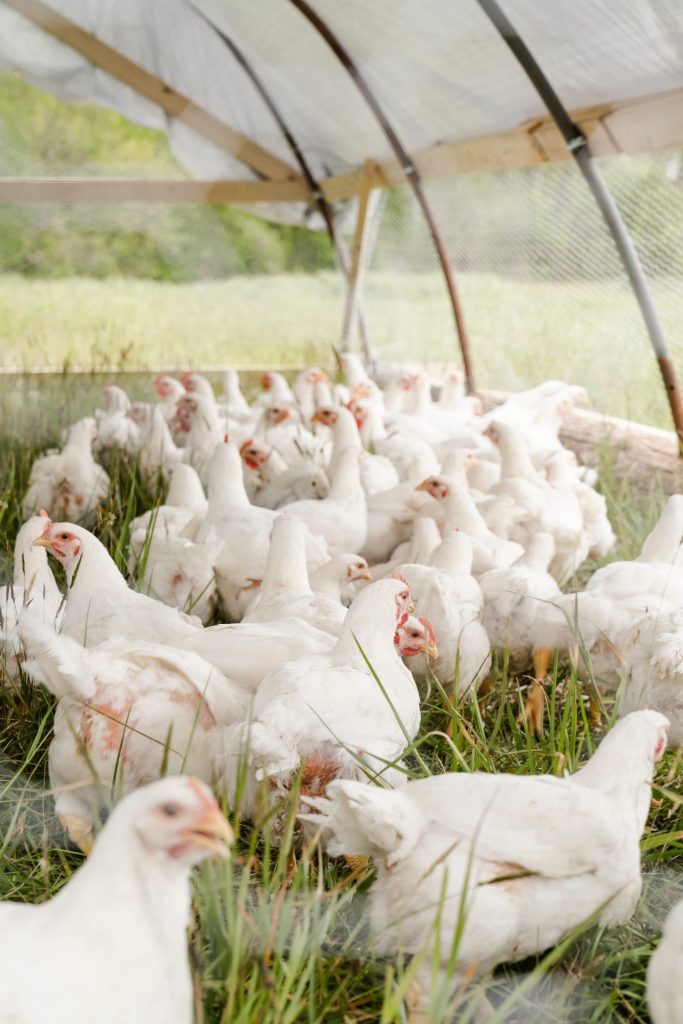
How to Put Wheels on Your Chicken Tractor
Smaller chicken tractors can be constructed with or without wheels, but larger or heavier models will need wheels to move anywhere. Depending on the size of your chicken tractor, you can attach wheels made for a lawnmower, wheelbarrow, trailer, or tractor.
Place your wheels only on the heaviest side of the chicken tractor to avoid the whole thing sitting inches off the ground and allowing predators in. On the opposite side of the wheels, you can place two handles much like a wheelbarrow to use leverage to move your tractor from place to place.
How Much Does a Chicken Tractor Cost?
Well, that depends! You can buy this stunning Williams-Sonoma setup for $2000.

You can build your own a-frame chicken tractor from free Ana White plans for around $150, or pick up the prebuilt version of this at Tractor Supply for around $350.
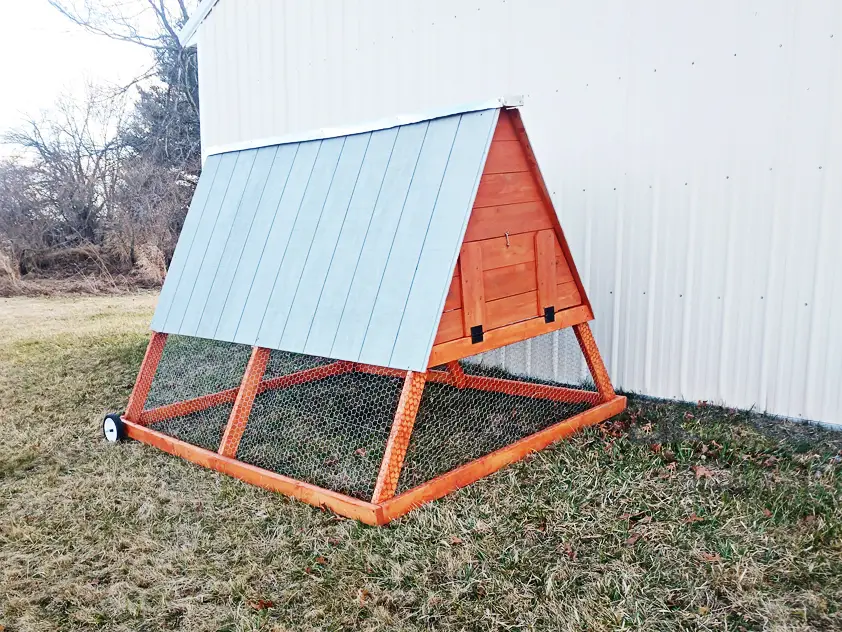
Because chicken tractors are lightweight and small, you can really use any small chicken coop with an attached run made for 3 to 4 chickens and call it a chicken tractor. As long as you can move it, it’s a tractor, right!? Or take one of those smaller models and simply add handles on one side, and wheels on the other, and you’re ready to go with your own chicken tractor.
What about you, have you used a chicken tractor before? Do you think it would work for you? Let us know your experience in the comments below.

Leave a Reply